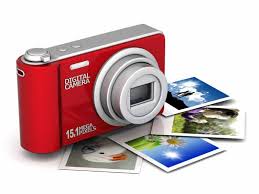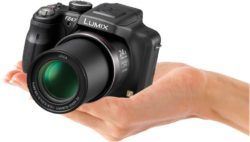
What Is a Digital Camera
A digital camera encodes images and videos digitally, and stores them for later reproduction. These cameras are incorporated and integrated into many devices, such as smartphones and computers. Many digital cameras can also record moving videos with sound. Some digital cameras can crop and stitch pictures, as well as perform other image editing.
In the 1960s, digital cameras used camera tubes. However, in 1975, Steven Sasson invented and built the first electronic camera using a charge-coupled device image sensor. Its early uses were mainly military, scientific, and medical applications.
In the mid to late 1990s digital cameras became more accessible and thus popular among consumers. Gradually, film cameras were replaced with digital cameras, which are most commonly sold throughout the world today.
The resolution of a digital camera is often limited by the image sensor that turns light into signals. Depending on the physical structure of the sensor, a color filter array may be used. The number of pixels in the sensor determines the camera’s “pixel count”. In a typical sensor, the pixel count is the product of the number of rows and the number of columns. For example, a 1,000 by 1,000 pixel sensor would have 1,000,000 pixels, or 1 megapixel.
There are three methods to take a picture with a digital camera. The preferred method for a given capture is determined largely by the subject matter. For example, it is usually inappropriate to attempt to capture a subject that is moving with anything but a single-shot system. However, the higher color fidelity and larger file sizes and resolutions available with multi-shot and scanning backs make them attractive for commercial photographers working with stationary subjects and large-format photographs.
Most current consumer digital cameras use a Bayer filter mosaic, in combination with an optical anti-aliasing filter, to reduce the aliasing due to the reduced sampling of the different primary-color images. The Bayer filter pattern is a repeating 2×2 mosaic pattern of light filters, with green ones at opposite corners and red and blue in the other two positions.
Cameras with digital image sensors that are smaller than the typical 35mm film size have a smaller field or angle of view when used with a lens of the same focal length. This is because the angle of view is a function of both focal length and the sensor or film size used.
A variety of additional features are available depending on the model of the camera. Such features include GPS, compass, barometer and altimeter. Some of them are rugged and waterproof.
Digital cameras come in a wide range of sizes, prices and capabilities. Specialized digital cameras, including multispectral imaging equipment and astrographs, are used for scientific, military, medical and other special purposes.
See also:
- Apple Encyclopedia: all information about products, electronic devices, operating systems and apps from iGotOffer.com experts.






Facebook
Twitter
RSS